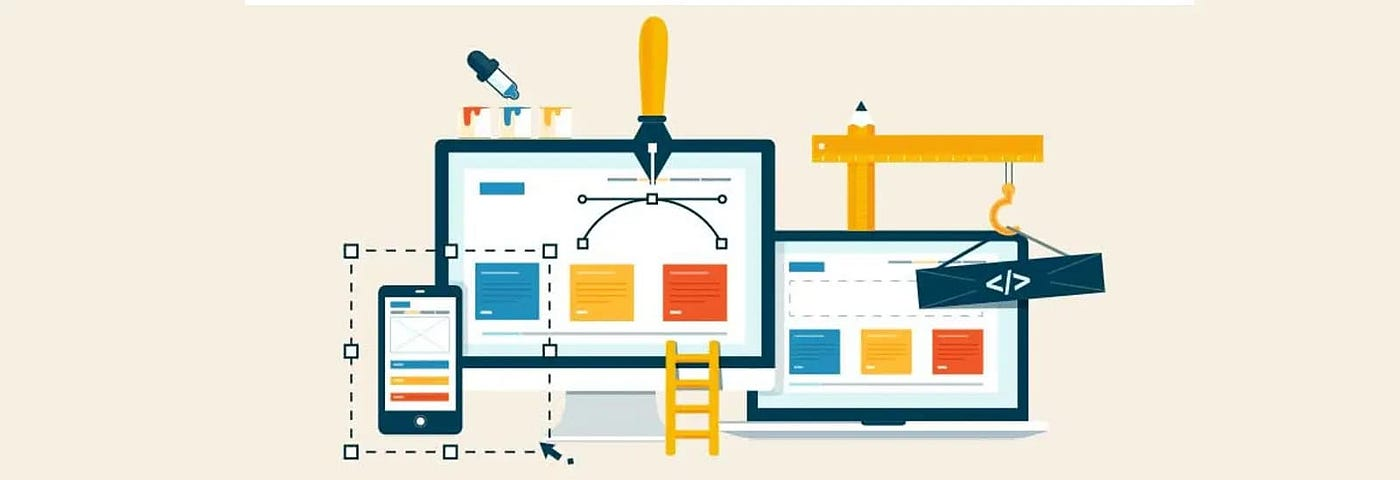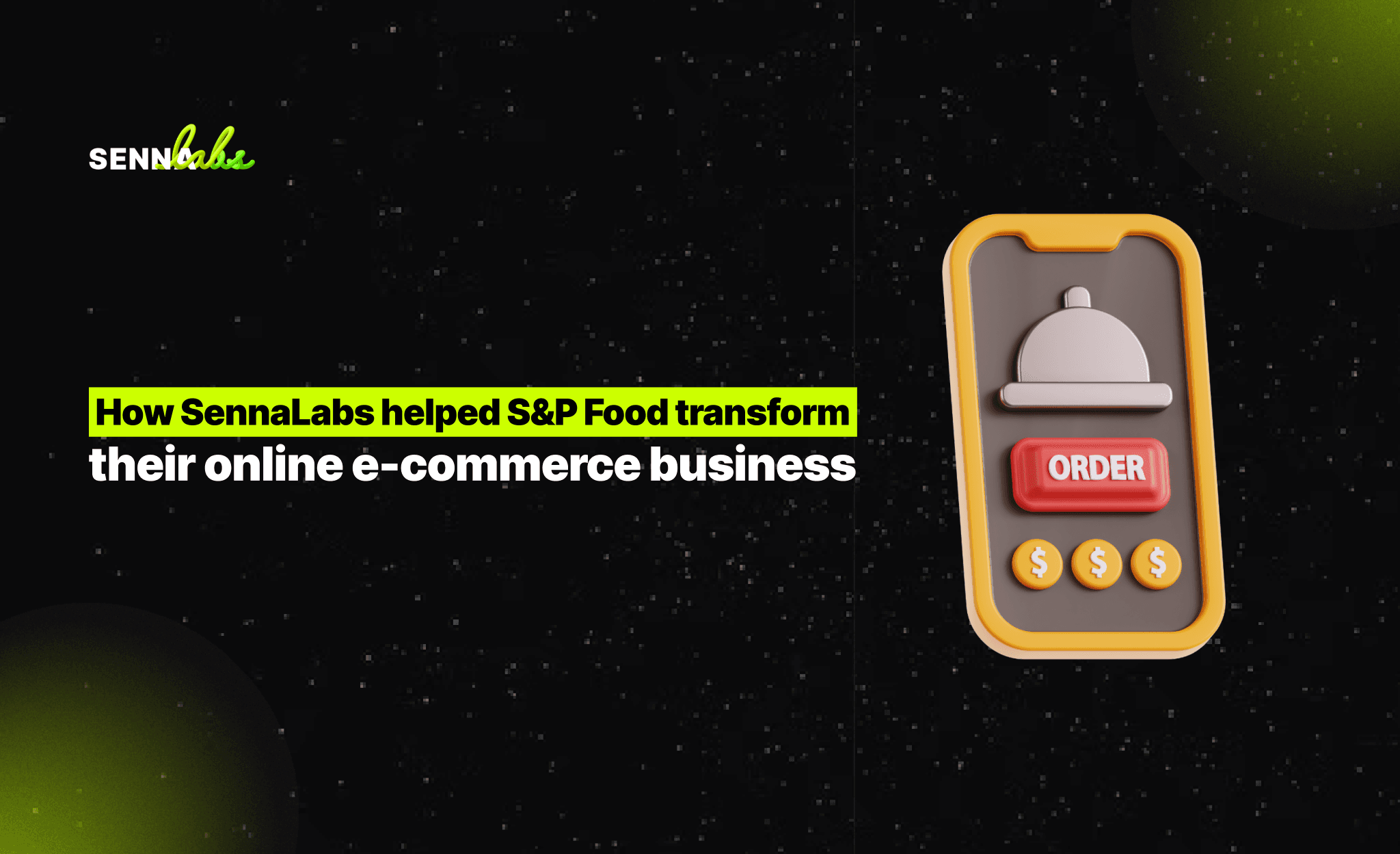Creating Seamless Navigation with UX/UI: A Guide for Educational Websites
Share

In today's digital age, educational institutions, from universities to schools, rely heavily on their websites to connect with students, faculty, and prospective learners. A university website often serves as a one-stop destination for a variety of users, offering information on courses, admissions, student resources, events, and much more. However, the effectiveness of these websites is often hindered by poor navigation and overwhelming content.
In this article, we’ll explore how improving UX/UI design—specifically seamless navigation—can greatly enhance the user experience and engagement on educational websites, especially for universities.

Why Navigation Matters for Educational Websites
When students, faculty, or potential applicants visit a university’s website, they expect to find specific information quickly. If they are faced with cluttered layouts, hard-to-find content, or a confusing user interface (UI), they’re likely to become frustrated and leave the site. This not only affects user experience (UX) but also impacts the university’s reputation and engagement metrics.
Seamless navigation plays a crucial role in helping users find what they need without hassle. It reduces frustration, increases time spent on the site, and encourages users to explore more pages, thereby improving engagement and conversion rates. For educational institutions, this can directly impact enrollment rates, student retention, and overall satisfaction.
Key Principles for Seamless Navigation on Educational Websites
To improve the user experience and make navigation intuitive for all users—students, faculty, prospective students, and visitors—there are several core UX/UI principles to follow:
1. Prioritize Information Hierarchy
The first step in creating seamless navigation is organizing content in a logical, easy-to-follow hierarchy. Educational websites often feature a lot of content, and users need to be able to find what they’re looking for quickly.
What you can do:
-
Main Menu Categories: Group information into broad categories such as Admissions, Academics, Campus Life, Resources, and Student Services.
-
Subcategories: Within each category, create submenus or dropdowns that further categorize the content, such as under "Academics," you might have “Programs,” “Departments,” and “Research.”
-
Search Functionality: Include a search bar prominently on the homepage and other key pages. This allows users to quickly locate specific information if they can’t find it through navigation alone.
2. Simplify Your Navigation Bar
The navigation bar is one of the most essential components of any website, and for universities, it is particularly important. Students, faculty, and potential applicants need to access specific information without excessive clicking or scrolling.
What you can do:
-
Minimalistic Design: Avoid cluttering the navigation bar with too many links. Stick to the most important categories, and link to secondary pages within drop-down menus.
-
Sticky Navigation Bar: A sticky navigation bar that stays at the top of the page as users scroll ensures they always have easy access to important links without having to scroll back up.
-
Consistent Layout: Maintain consistent navigation on all pages so that users know exactly where to find key information, no matter what page they’re on.
3. Make Important Information Easily Accessible
When students visit an educational website, they often look for information on things like admissions, financial aid, or course offerings. It’s crucial to highlight these key areas to make them as easy to access as possible.
What you can do:
-
Quick Links: Create a “Quick Links” section on the homepage that includes links to the most frequently searched-for content, such as application forms, scholarship information, and student portals.
-
Call-to-Actions (CTAs): Use visually distinct buttons or banners for important actions such as “Apply Now,” “Request Information,” or “Visit Campus.” Position these CTAs in prominent places on the page.
-
Clear Labels: Avoid jargon or unclear terms. Use simple and direct labels like “Undergraduate Programs” or “Graduate Admissions” to help users navigate with ease.
4. Create a Clear Path for Prospective Students
Prospective students typically visit university websites to learn more about the application process, degree programs, and campus life. Make sure their journey through your website is smooth, so they don’t get lost or frustrated.
What you can do:
-
Admissions Funnel: Design a user-friendly admissions section that provides clear steps for prospective students. This can include application guidelines, deadlines, program options, and FAQs.
-
Interactive Features: Add interactive elements, such as a program search tool that allows students to filter courses by degree, department, or specialization. You could also offer a virtual tour of the campus or a “chat with admissions” feature for prospective students to ask questions in real-time.
-
Personalized User Journey: Allow users to create personalized profiles (for example, a “Prospective Student” profile) where they can save important information, track applications, and receive relevant recommendations or updates.
5. Prioritize Mobile-Friendly Navigation
More and more users are accessing websites via mobile devices. Educational websites need to be fully optimized for mobile use, especially when it comes to navigation. A responsive design ensures that the website’s content and layout adapt to different screen sizes.
What you can do:
-
Mobile-Friendly Layout: Design a mobile-friendly version of your website with a collapsible menu or a “hamburger” menu, which saves space and makes it easy for users to navigate.
-
Touch-Friendly Buttons: Ensure that clickable elements like buttons and links are large enough and spaced appropriately for touch interaction on mobile devices.
-
Testing on Multiple Devices: Regularly test your website’s design on different mobile devices to ensure the navigation remains user-friendly and intuitive.
6. Streamline the User Experience with Breadcrumbs
Breadcrumbs provide users with a secondary navigation system, helping them understand where they are on your website and how to return to previous pages easily. This is particularly helpful for larger websites like universities that have many pages of content.
What you can do:
-
Breadcrumbs: Add breadcrumb navigation near the top of each page, which shows the path from the homepage to the current page. For example, a breadcrumb for an admissions page might look like: Home > Admissions > Undergraduate Programs > Apply Now.
-
Clickable Links: Ensure that breadcrumbs are clickable, allowing users to navigate back to higher-level pages without having to use the back button.
Case Study: Improving Navigation for a University Website
A university website was experiencing high bounce rates and low engagement. Students and prospective applicants complained that the website was hard to navigate, with important information buried in submenus. The university decided to redesign its website with a focus on seamless navigation to improve user experience.
The Changes Implemented:
-
Simplified Navigation Bar: The university streamlined the navigation bar to include only the most important categories, such as “Admissions,” “Programs,” “Student Life,” and “Research.” Drop-down menus were used to organize subcategories, such as different programs or research departments.
-
Clear Call-to-Actions: The university added clear CTAs like “Apply Now” and “Request Information” throughout the site, making it easier for users to take action without feeling overwhelmed by too much information.
-
Mobile Optimization: The design was made fully responsive, ensuring students and prospective applicants could access the website on mobile devices without experiencing any usability issues. A sticky navigation bar was added to make navigation easier on small screens.
-
Breadcrumbs and Quick Links: Breadcrumb navigation was introduced to help users trace their steps and return to previous pages, and a “Quick Links” section was added to highlight frequently searched-for pages like application forms, financial aid, and academic calendars.
Results:
-
Increased Engagement: After the redesign, user engagement increased significantly, with students spending more time on the site exploring different departments and academic offerings.
-
Higher Conversion Rates: The clear and accessible CTAs led to more clicks on the “Apply Now” and “Request Info” buttons, resulting in a higher number of applications.
-
Lower Bounce Rates: By simplifying navigation and focusing on essential information, the university saw a significant reduction in bounce rates as users could easily find what they were looking for.
Conclusion
Seamless navigation is key to improving user experience on educational websites. By focusing on intuitive, organized design principles, educational institutions can make it easier for users to find information, complete tasks, and ultimately achieve their goals—whether it’s applying to a program or simply learning more about campus life. Through smart design choices, universities can enhance user engagement, build trust with prospective students, and increase conversions. Ultimately, a well-structured and user-friendly website can make a lasting impression and help attract and retain students in an increasingly digital world.

Share

Keep me postedto follow product news, latest in technology, solutions, and updates
Related articles
Explore all


